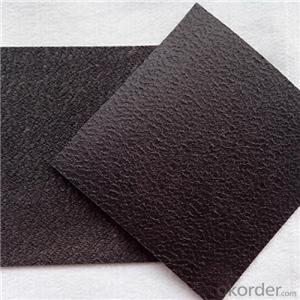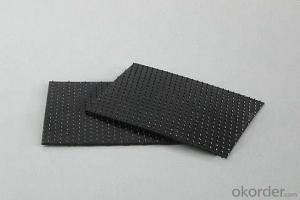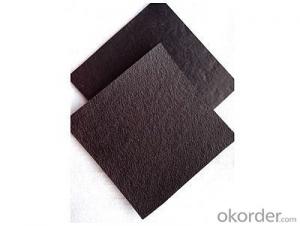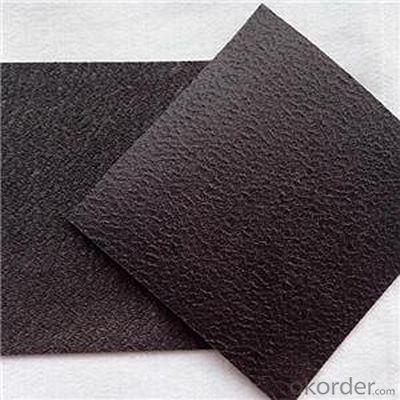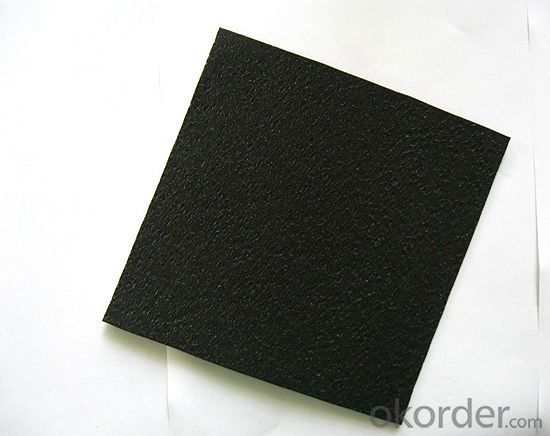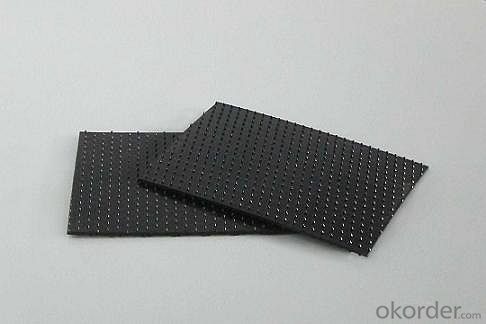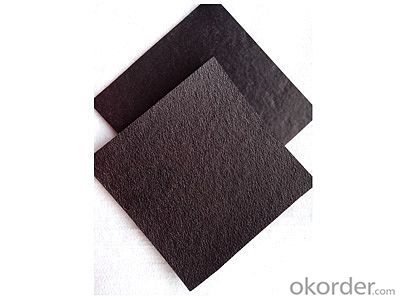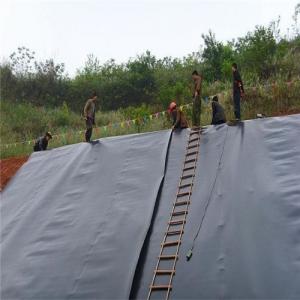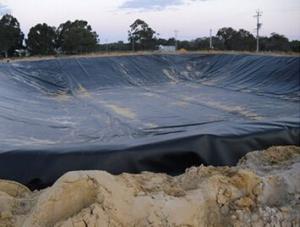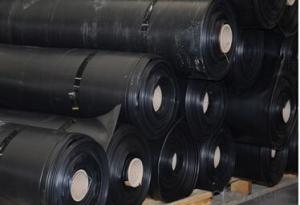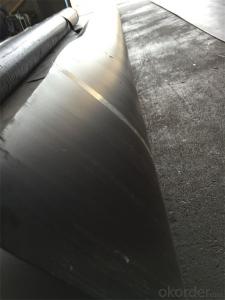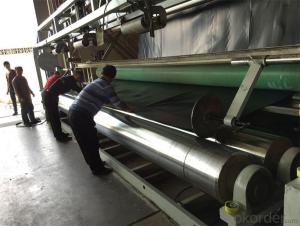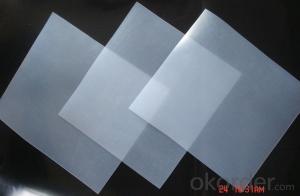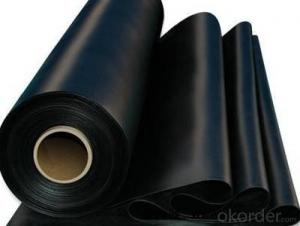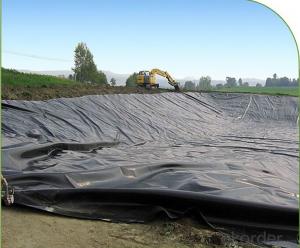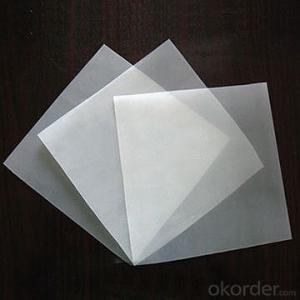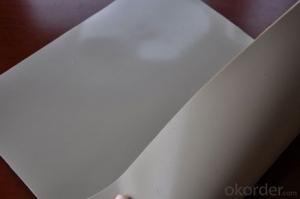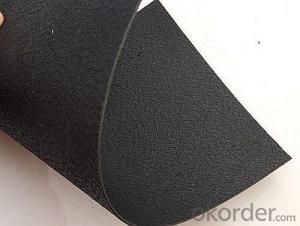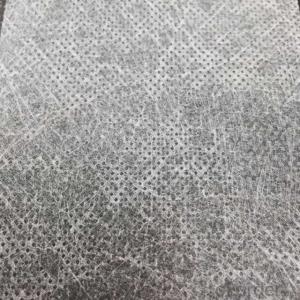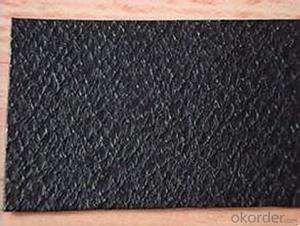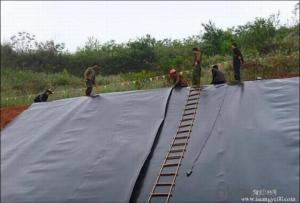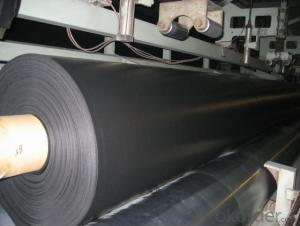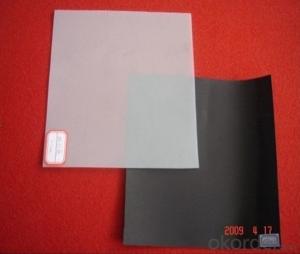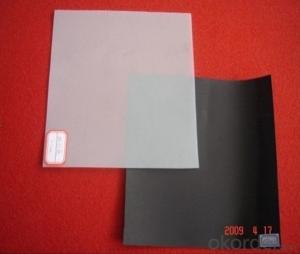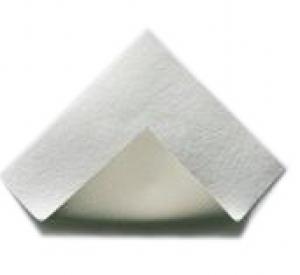Atarfil Geomembrane Polypropylene Waterproof Roll Cmax
- Loading Port:
- China main port
- Payment Terms:
- TT OR LC
- Min Order Qty:
- 1000 m²
- Supply Capability:
- 1000000 m²/month
OKorder Service Pledge
OKorder Financial Service
You Might Also Like
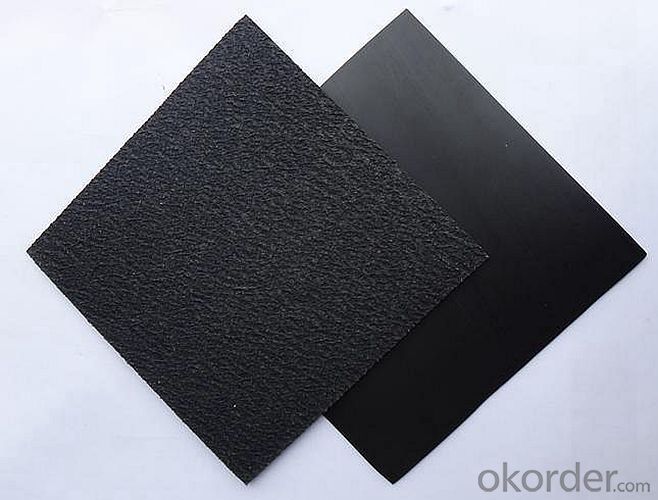
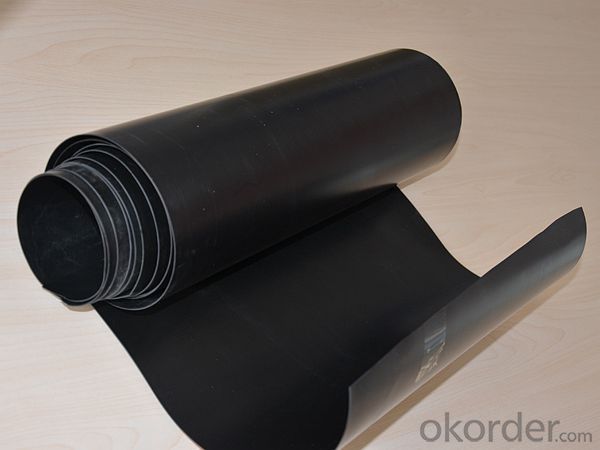
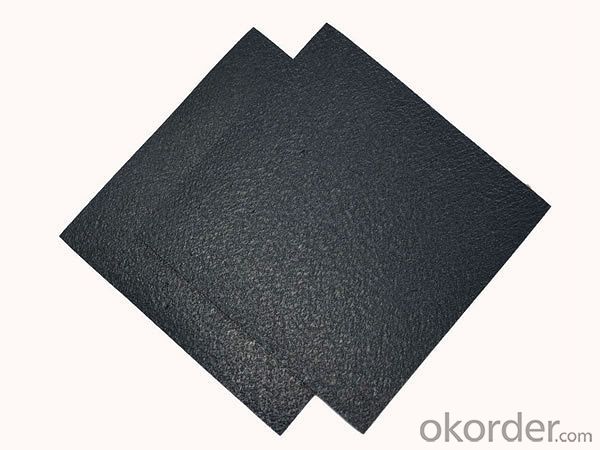
LDPE Geomembrane
Thickness: 0.1mm to 3.0mm
Roll Size: 4m-9m in width
roll length as design or client’s request
Impermeable Geomembrane HDPE for Shrimp Pond is mainly made of virgin HDPE with blow molding technique. Its main function is to prevent the liquid leakage and gas volatilization.
Our Service
1.On a regular basis or as per your request,we entrust national testing agencies to conduct quality inspections
2. Strictly in accordance with the ISO9001-2008 international quality system standard,we monitor and manage the whole process throughout production,quality testing,and measurement to ensure product quality
3. For quality-related construction delay or substandard construction(except for damage or losses due to customer’s responsibility or irresistible natural disasters),we have refunding,replacement,and repair services.We will respond to customers’ feedbacks on quality issues within 24 hours.
FAQ:
Q: What kind of payments does jenor support?
A: T/T, L/C, Cash are accepted.
Q: Do you charge for the samples?
A: Accordeing to our company policy, the samples are free, we only charge the freight fee. And we will return the freight fee during the next order.
Q: Can you produce according to customers' design?
A: Sure, we are professional manufacturer, OEM and ODM are both welcome.
Q: Do you have other products?
A: Yes, please check the pictures:
- Q: How do geomembranes help in preventing soil contamination in industrial sites?
- Geomembranes help in preventing soil contamination in industrial sites by acting as a protective barrier between the soil and any potential contaminants. They provide a barrier to prevent the leaching of hazardous substances into the soil, thus minimizing the risk of contamination. Additionally, geomembranes can also be used to contain and manage any existing contaminants, preventing them from spreading further into the soil and surrounding environment.
- Q: What is the cost of geomembranes?
- The cost of geomembranes can vary depending on factors such as the material used, thickness, size, and quantity needed. Generally, geomembranes range in cost from a few dollars per square meter to several tens of dollars per square meter. It is best to consult with suppliers or manufacturers to get specific pricing information based on project requirements.
- Q: What are the environmental impacts of geomembranes?
- Geomembranes, which are impermeable synthetic liners used in various construction and industrial applications, can have both positive and negative environmental impacts. On the positive side, geomembranes can prevent the contamination of soil and groundwater by hazardous substances, thus protecting the environment. They also help in the conservation of water resources by reducing seepage and evaporation. However, the production and disposal of geomembranes can lead to certain negative environmental impacts. The manufacturing process of these liners requires the use of energy and raw materials, which can contribute to carbon emissions and resource depletion. Additionally, if not properly managed, the disposal of geomembranes at the end of their lifespan can result in waste generation and potential pollution. To minimize the environmental impacts of geomembranes, it is crucial to consider sustainable manufacturing practices, including the use of recycled materials and energy-efficient processes. Furthermore, proper disposal methods, such as recycling or incineration, should be employed to reduce waste and potential pollution.
- Q: Why imported geomembrane (HDPE) is most frequently used impermeable?material among artificial synthetic materials?
- There are many domestic geomembranes , and there is no need to import, after all they are not high-tech products.
- Q: How do geomembranes contribute to the preservation of archaeological sites?
- Geomembranes contribute to the preservation of archaeological sites by providing a protective barrier that helps prevent the degradation and erosion of the site. These synthetic liners are used to cover and isolate the archaeological areas, acting as a barrier against water infiltration, soil movement, and the growth of invasive plants. By preventing these factors from damaging the site, geomembranes help in maintaining the integrity and longevity of archaeological remains, ensuring their preservation for future generations.
- Q: How to use electrothermal?film?
- If the temperature controller and capacitance of it are the same, it can be used, there is no need to find it anymore for it may stops production.
- Q: How do geomembranes perform in underground mining operations?
- Geomembranes are highly effective in underground mining operations due to their ability to provide reliable containment and barrier systems. They are utilized to prevent the escape of harmful substances, such as contaminants and liquids, into the surrounding environment. This helps to protect both the workers and the ecosystem from potential hazards. Additionally, geomembranes are resistant to punctures and have a high tensile strength, making them ideal for use in rugged mining conditions.
- Q: Geomembrane and geotextile construction scheme
- Shallow water lotus root planting technology has become the most water and fertilizer saving method after a few years of development. In order to break through the restricting bottleneck, cropping pattern with the best economic benefits, the most convenient management. Especially suitable for water-deficient area!
- Q: What is the difference between a geomembrane and a geotextile?
- A geomembrane is a synthetic material used for containment and barrier purposes, typically made of impermeable materials like plastic or rubber. It is designed to prevent the movement of fluids or gases and is commonly used in applications such as landfill liners or pond liners. On the other hand, a geotextile is a permeable fabric made from synthetic or natural fibers. It is used for filtration, separation, and reinforcement purposes in civil engineering and construction projects. Geotextiles allow water to pass through while preventing the migration of fine particles, providing stability and drainage in applications like road construction or erosion control. In summary, the main difference between a geomembrane and a geotextile lies in their function and material composition. While geomembranes are impermeable barriers used for containment, geotextiles are permeable fabrics used for filtration and reinforcement.
- Q: Can geomembranes be used in stormwater management systems?
- Yes, geomembranes can be used in stormwater management systems. They are typically used to line stormwater detention ponds, tanks, or channels to prevent the infiltration of water into the surrounding soil. By containing stormwater within the geomembrane liner, it helps to prevent contamination of groundwater and control the flow of stormwater, allowing for proper treatment and management.
Send your message to us
Atarfil Geomembrane Polypropylene Waterproof Roll Cmax
- Loading Port:
- China main port
- Payment Terms:
- TT OR LC
- Min Order Qty:
- 1000 m²
- Supply Capability:
- 1000000 m²/month
OKorder Service Pledge
OKorder Financial Service
Similar products
Hot products
Hot Searches
Related keywords
